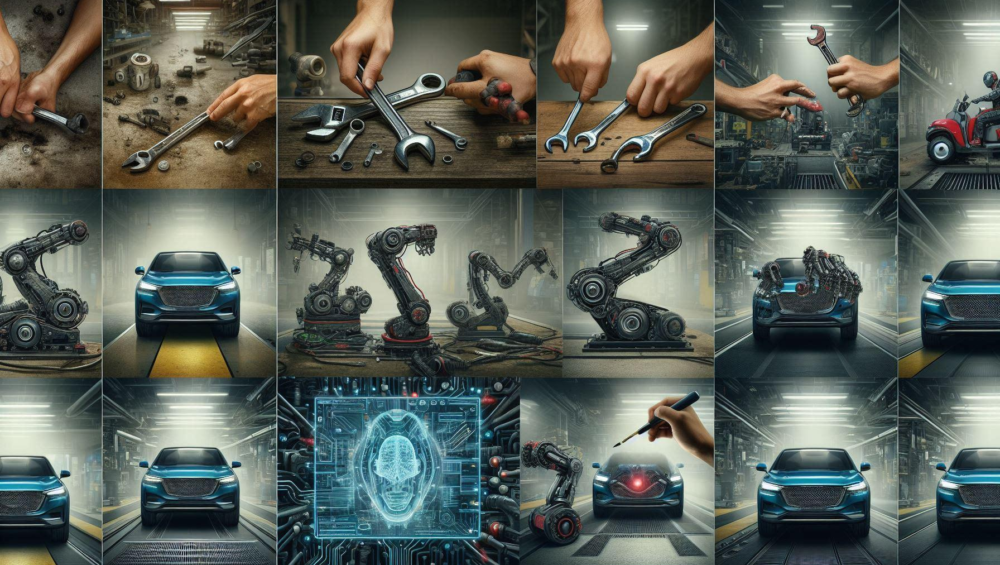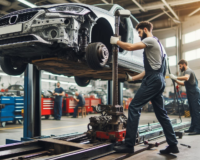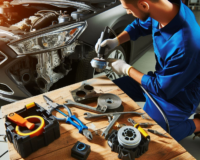As the automotive industry continues to evolve, so does the field of collision repair. Technological advancements, changing materials, and shifting consumer expectations are shaping the future of how we repair vehicles. In this article, we’ll explore the trends and predictions that are driving the transformation of vehicle repair.
1. Electric Vehicle Repairs
Trend: The rise of electric vehicles (EVs) is reshaping the repair landscape. EVs have fewer moving parts, simplified drivetrains, and unique safety considerations. Repair shops must adapt to handle EV-specific repairs, including battery maintenance, motor servicing, and high-voltage systems.
Prediction: As EV adoption grows, specialized EV repair training and equipment will become essential for collision repair professionals. Expect to see more EV-focused certifications and workshops.
!Electric Vehicle Repair
Image: A technician working on an electric vehicle.
2. Advanced Safety Features
Trend: Modern vehicles come equipped with advanced safety technologies like adaptive cruise control, lane departure warning, and automatic emergency braking. These features enhance safety but also complicate repairs due to intricate sensors and calibration requirements.
Prediction: Collision repair shops will invest in diagnostic tools and training to recalibrate safety systems accurately. Collaboration with automakers and insurers will be crucial to ensure proper repairs.
3. Autonomous Vehicles
Trend: While fully autonomous vehicles are still on the horizon, semi-autonomous features are already here. Cameras, lidar, and radar systems enable self-driving capabilities. Repairing these complex systems demands specialized expertise.
Prediction: Collision repair professionals will need to upskill to handle autonomous vehicle repairs. Understanding sensor technology and software integration will be vital.
4. Materials Evolution
Trend: Automakers are using lightweight materials like aluminum, carbon fiber, and high-strength steel to improve fuel efficiency and safety. These materials require different repair techniques and tools.
Prediction: Repair shops will invest in aluminum welding equipment, carbon fiber repair kits, and training to work with these materials effectively.
5. Digital Technology Integration
Trend: Photo estimating, 3D scanning, and augmented reality are streamlining repair processes. Digital tools enhance accuracy, reduce cycle times, and improve customer experience.
Prediction: Collision repair shops will fully embrace digital technology. Expect more seamless communication between insurers, repairers, and customers.
6. Environmental Concerns
Trend: Climate change awareness is influencing repair practices. Eco-friendly paints, recycling programs, and sustainable practices are gaining traction.
Prediction: Repair shops will adopt greener processes, from water-based paints to energy-efficient equipment. Consumers will seek eco-conscious repair options.
In conclusion, the collision repair industry is at a crossroads. Embracing innovation, investing in training, and prioritizing sustainability will define its future. As vehicles evolve, so must our repair practices.
Remember, the next time you see a technician working diligently on a damaged car, they’re not just fixing metal—they’re shaping the future of vehicle repair. ????????




